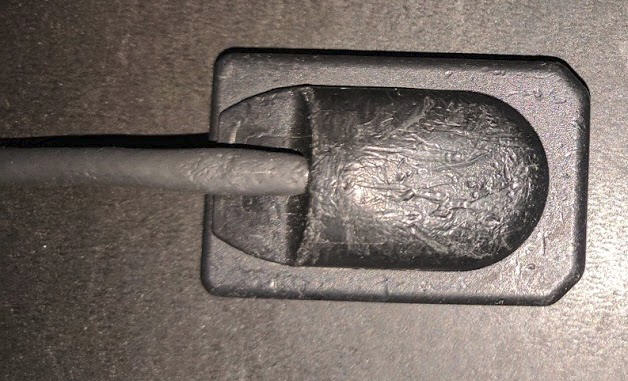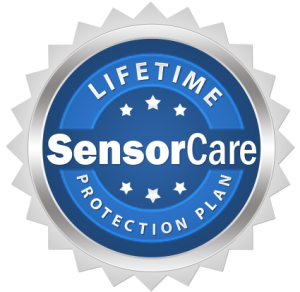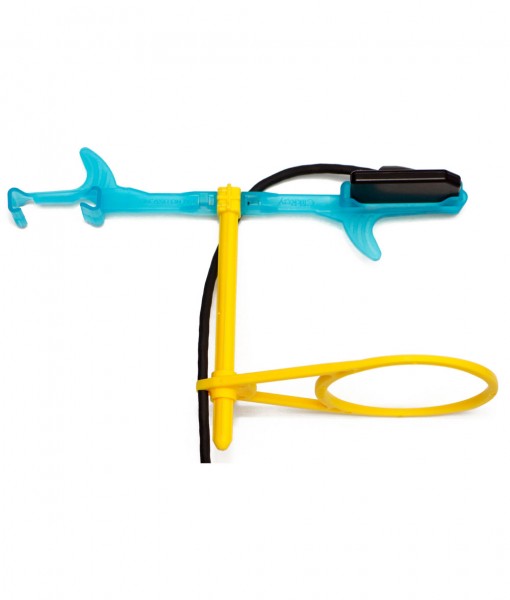With the proper care of your Dental X-Ray Sensors your office can avoid unnecessary expenses.
Incorporating a digital dental radiography system provides a range of operational advancements as well as efficiencies to a practice, despite considerable initial investment, these systems can even save a practice money over the long term. However, if your office does not have proper dental sensor care procedures, practices can find the price tag all of the sudden increasing as well as eating away at the return on their investment.
Here our some proper Dental Sensor Care Tips:
Storage
Make sure to safely store and transport your dental x-ray sensors. Many practices keep digital dental sensors in small baskets with the cable loosely coiled. The baskets can be used to carry equipment between operatories and provide an easy place to keep all sensor components. Some offices even use two hooks on the wall that are properly spaced (around 2 feet) and then hanging the dental sensor on the hooks. The best solution we have found our holders that are mounted to the wall the cradle the sensor.

Dental Sensor Wall Mounts

Wire Basket
When you are done using the sensor and/or are between patients. We recommend that you unplug the sensor and to store safely between patients. When a dental sensor is connected, it is typically always on and constantly communicating with the computer. As a result, issues can pop up. If there’s an electrical disruption to your system (lightning strike, ESD, power outage, etc.), it can damage the sensors components or cause errors. Maintaining an inserted dental sensor all the time will invariably affect overall shelf life. Removing your dental sensor between uses is the best way to ensure longevity of your sensor.
Holder Systems
We always recommend using a sensor holder/positioner. A sensor holder will help to protect the sensor as well as ensuring that it is properly positioned in the patient’s mouth. The dental holder system We recommend the ClikRay Holder Systems, as they work with most sensors and are a great price. The Dental Sensor holders make sure that you sensor housing and cable are not being bitten or chewed on.
Cable Care
The cable on a dental sensor is usually the first thing to fail on a sensor. This can be easily avoidable with proper techniques. The first is to not let your patients bite on your sensor cable when it is in their mouths. Having patient repeatedly bite your sensor cable is a sure fire way to cable failure. We usually recommend not saying the word "Bite", instead say something like "Please, close slowly". When you say bite patients typically bite with everything they got, which is not good for your sensor cable. When they close slowly make sure the patient is not biting on the sensor cable. If your sensor looks like the one below your dental sensor is going to fail very quickly.

When storing your dental sensor, you want to make sure that it is being stored with out any sharp kinks or bends in the cable. This is going to drastically decrease the life of your sensor cable. Think of your sensor cable a lot like a wire coat hanger. As you keep bending a wire coat hanger it will eventually break. The wires in your sensor cable are very similar, the more the cable gets bent the more like they are going to break quicker.
Also, make sure not to be pulling on the cable. This applies to unplugging the cable from the USB hub, removing the sensor from a sheath/barrier & cleaning the cable. When cleaning the cable, hold the cable and not the sensor head or interface. Pulling the cable risks pulling up contacts and irreparably damaging the sensor.
Cleaning Dental Sensors & Accessories
Properly sterilizing autoclavable accessories such as dental sensor holders, rings and other digital radiography accessories often require sterilization. Be sure to follow all manufacturer instructions for the proper method of sterilization to preserve the lifespan of the accessories. Typically most holder systems should be replaced after 30-60 day depending on use.
Properly clean sensors is very important. Digital radiography sensors are not autoclavable, but they may still require cleaning. Be sure to follow manufacturer instructions for the proper cleaning method and materials so the sensor will not be damaged during cleaning.
Recommended Disinfectant
The following surface disinfectant has been found to be effective in achieving a desired level of disinfection and is available from Patterson Dental and other suppliers.
- Isopropyl (70%) (Recommended)
- Cavi-Wipes (Metrex Research, Kerr) or equivalent
- Cavicide
- Prospray
- Sporox II
- VoloWipes™
Cleaning and Disinfecting
Every sensor manufacture has their own cleaning procedure for their sensors but they are all pretty much the same process. For the Apex Dental Sensors, we recommend being in a clinical use environment, the health care provider should wear protective disposable gloves and cover the Apex Sensor with a hygienic barrier. Before using the Apex Sensor the first time, and before every new patient, the following protocol is recommended:
1. Remove and discard all protective hygienic barriers and / or sheaths from the Sensor prior to removing disposable gloves.
2. Place the Sensor on a tray covered by a disposable liner, or in a receptacle that can be thoroughly disinfected.
3. Remove and discard gloves.
4. Wash hands and put on a new pair of disposable gloves.
5. Disconnect the Sensor from computer.
6. If the Sensor or cable are visibly soiled (e.g., with blood or saliva), each should be cleaned with a soapy cloth or paper towel, and then dried with a clean lint-free cloth or paper towel.
7. Thoroughly wipe the Sensor and cable (if applicable) with the disinfecting product recommended above. Do not expose the contacts of the sensor/remote module connection to liquid.
8. Repeat step 7. When the Sensor has been wiped two times, continue with the following steps.
9. Remove potential chemical build-up from the Sensor by wiping it with a sterile lap sponge saturated with de-ionized water.
10. Use a sterile dry lap sponge to dry the Sensor or cable, as needed.
11. Place the Sensor in a clean environment, ready for next use.
12. Remove and discard gloves.
USB Hubs & Extension Cables
We recommend that with the use of any USB device (Dental Sensors, Intraoral Cameras, etc.) you use a Powered USB hub. With the frequent plugging and unplugging of the dental sensor, there will be normal wear and tear on the USB port. It is much less expensive to replace a USB hub that has worn out than a USB port on a computer.
The same applies with a USB extension cable. With our Apex Dental Sensors we have a short usb extension. The purpose of this is to protect the usb end of the sensor. You will then be wearing out the usb extension instead of the actual sensor usb end.
You do have to be careful when getting a USB extension. When you and another connection to the sensor this can reduce the voltage and power to the sensor, which can cause problems with your sensor. We typically do not recommend over a 3-4 feet usb extension cable. If you need a longer cable we recommend a active USB cable this will give you the extra length but also make sure you are still using with a powered usb hub.

Powered USB Hub

StarTech Active USB Cable
Extended Care Plan
Another upfront cost to consider is the service plan that will protect the investment. Most Dental X-Ray Sensors come with a 2 year manufacture warranty including the Apex Dental Sensors. However there are sensors that only come with a 1-year manufacture warranty...looking at you Dexis. It is often still a good idea for practices to budget for extending their coverage.
The cost of extending the plan should be factored in while planning the overall investment in the system. With Apex Dental Sensors, extending the SensorCare Plan provides a practice with the availability of replacements/repairs for sensors that break down due to manufacturer error or accidental damage. Service plans can even be helpful if sensors get damaged through misuse or accidents at a practice.
When doctors purchase at least (1) Apex Dental Sensor you can also enroll into the optional SensorCare Protection Plan. The plan will cover ANY brand of the sensor against physical damage. The cost to enroll is $495/year & covers up to (10) Dental Sensors per office. If a Sensor is damaged and needs to be replaced, the replacement cost is 50% off the current retail & is replaced with an Apex Sensor. The Sensor Care Plan also covers repairs on the Apex Dental Sensors only. It is 50% off of repairs on the Apex Dental Sensors.

SensorCare Protection Plan
Of course making sure the sensors are properly used and cared for is the easiest way to make sure they are not damaged in the first place and avoid the unexpected cost of a sudden replacement. Just like any electrical cord, digital sensor cables should never be crimped or tightly wound around anything. Sensor care, with hands on demonstrations, is the first topic Masterlink instructors cover during their training sessions.
Summary
But in the end, avoiding hidden and unexpected costs with a digital radiography system comes down to treating the expensive equipment with care and attention. Sensors could last well beyond five years of daily use if they are properly cared for. If you follow these steps you sensors should last for years to come.
If your office has any questions about proper sensor care please give our office a call at (800) 869-0915.

